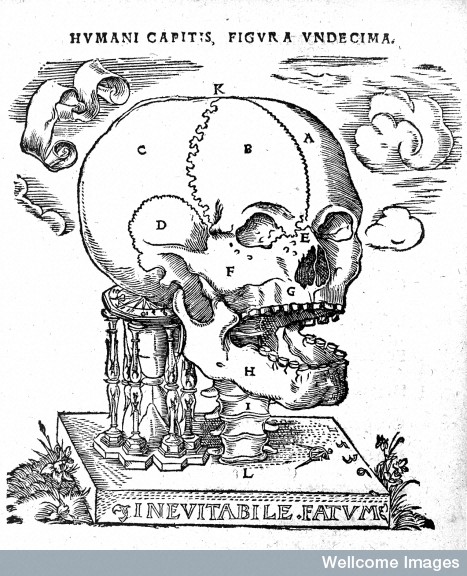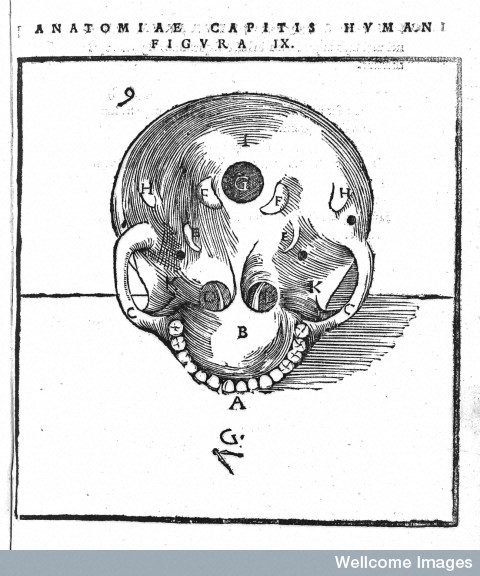I have been
paying attention recently to anatomical figures studying other anatomical
figures (a post soon to come). But in
the midst of this came this great woodcut reminding us all of our impending and
ever-looming end of days, and found in Johann Dryander’s (1500–1560) fabulous pre-Vesalian
anatomy (or pre-1543) Anatomiae, hoc est, corporis humani dissectionis pars prior…(published in Marburg by Eucharius Cervicornus in 1537). One of the reasons for the book’s great importance
was that it was about the first anatomy to focus and specialize on one part of
the body, and it was also one of the first few where the anatomist worked on
his own dissections.
You’d
think that seeing anatomies and dissected bits of body would quickly remind the
reader of the grave, but this was not quite enough for Dryander’s artist, who
though to add the depleted hourglass to prop up the gap-mouthed skull—just in
case you weren’t already paying attention to obvious symbolism.
Note: image from the Wellcome Institute website which also has many other images from the book, including successive images of the dissection of the head.
Oh, here's another, just an unusual perspective of the skull, seen from the bottom up.





Comments